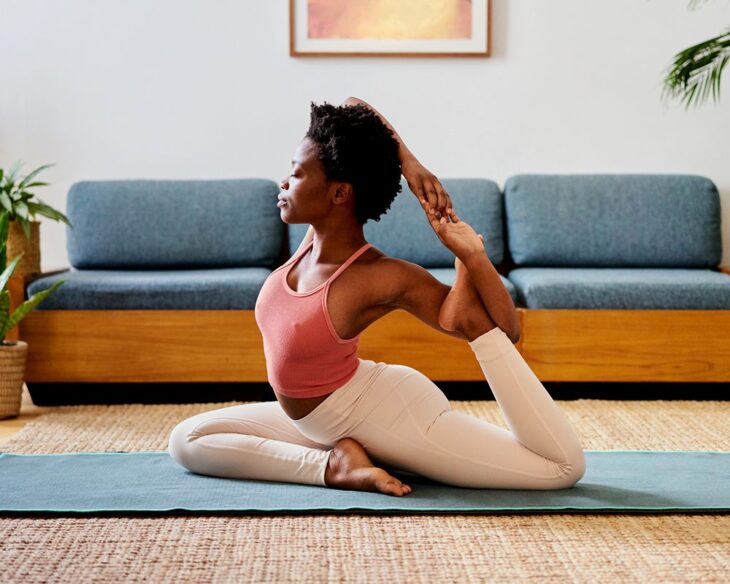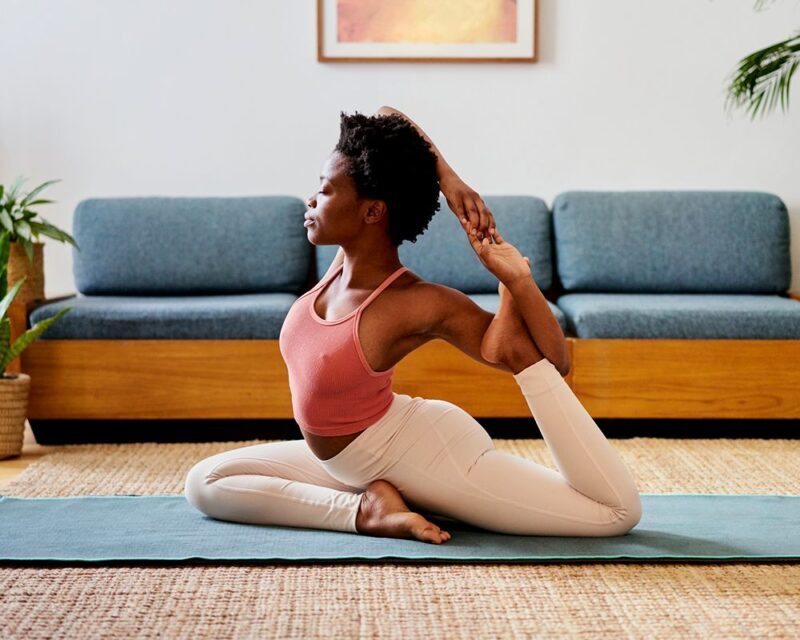
For those of you who want to achieve high flexibility in your body, you can practice yoga movements to achieve this. The positive value that can be obtained from high flexibility is the many benefits felt, including a wider range of motion and reduced back pain because the quality of the joints is maintained, damage occurs to joints that are used a lot and the risk of injury during sports.
Flexibility is just one of the many benefits that can be gained from yoga. The fact that must be realized is that everyone must continue to go step by step and not immediately do movements that are too difficult even though they already have basic knowledge about yoga. The thing to note is that everyone needs to work on their strength before actually doing more difficult yoga movements. The muscles supporting the movement need to be trained well, and safe alignment needs to be done and ensure that everything is moving in the right proportions.
Even though flexibility is one of the biggest benefits of yoga, in fact, some people still have a fear of flexibility. More precisely, it is because of awareness of a person’s lack of flexibility which in the end becomes a scourge and makes people feel doubtful until they finally decide to stop yoga.
You must understand very well that natural flexibility is not something you must have before deciding to take up yoga. So don’t be too afraid of this myth that is already widespread. Start cultivating it in your heart, and start shouting out loud that everyone can do yoga even without any natural flexibility talent.
When you feel tight in your hamstrings, hips, shoulders, calves, or any other area that is bothering you, doing yoga movements is the right way for you to deal with it. Don’t understand flexibility as a prerequisite but understand it as a result obtained from yoga. It is not people who can bend their bodies so that their nose touches their knees who are considered the best in the field of yoga, but anyone who can achieve a certain level of flexibility in their life is considered successful.
The Importance of Flexibility
Physical fitness is largely determined by the body’s flexibility. Most people will probably focus on strength training or cardio training for health. Did you know that flexibility causes fewer injuries? When the problem occurs, treatment often involves stretching tight muscles that limit the range of motion and put pressure on vulnerable areas such as joints.
We should also mention the mental benefits of increasing your flexibility. Flexibility is improved through stretching and stretching feels comfortable. Stretch when you have problems and relieve stress and tension. The mind will always follow the body. When physical tension is low, mental tension is also low. So this is what makes yoga very important for relaxation, creating well-being, and reducing sleep disorders or insomnia.
See also : Tips for Managing Stress and Anxiety
Yoga increases Flexibility
Stretching is not the same as yoga because the emphasis is on safety. The variety and duration of stretching can also work on hidden muscle groups and major muscles that I had never noticed before, such as the piriformis and psoas. The differences in yoga can be categorized into these three things, attention, harmony, and awareness.
Alignment allows you to achieve maximum yoga movement while keeping the risk of injury at a very low level. You can use props that will help open up narrower areas. Practicing while maintaining awareness of alignment ensures you won’t compromise one area of the body so you can focus on another. An experienced teacher will help maximize alignment, for example, helping with alignment with the help of yoga mat.
Attention is paid so that there is no zoning out in just doing the movements, but rather doing each pose to the maximum and feeling it. With this, there will be awareness in the body which needs to be the difference between the discomfort that arises when moving the body in a way that has never been tried and the presence of pain which is a signal for the body to stop. In your body there is only you, so you are the one who can feel and determine.
Awareness means maintaining your focus on each yoga movement that is being practiced. Know that the yoga practice you have done has made you survive. You will learn to regulate your breath so that you can return to your best body condition whenever you need it. Mindfulness is the most vital component of yoga because it can bring us out of our animal minds and allow us to reset and maintain stress and anxiety levels.
How Long Does It Take to Be Flexible?
The benefits of yoga are that you can feel takes time, and you need consistency, dedication, and also repeated practice to reach the highest level, so don’t rush and force yourself. You need to start faster so that you can gain flexibility more quickly, but there are too many variables to consider so you can’t give a time limit for each achievement. It all depends on when you start and what you have done.
Running too much will make your leg muscles tense a lot so the impact will be sitting a lot. The intensity of doing yoga movements, the type of yoga movements done, each person’s unique physical condition, and many other things also have an influence. What you can understand now is to do yoga consistently and with dedication to achieve your target flexibility.
The best way to achieve the required level of flexibility is to take a yoga class where you can meet an instructor who can tell you the best way to achieve it with low risk and maximum results.
When you realize that you are not naturally flexible, you will start to hesitate about joining yoga, give up before you start, or stop even when you haven’t gone far, you will even start to question whether when you are in yoga class, you are in the right place and are needed.
Best Yoga Positions for Flexibility
The best ones for increasing flexibility are the ones that are done most consistently. Having mentioned several main muscle groups that make many people feel short of breath and have difficulty breathing. Hips, hamstrings, and shoulders tend to be the easiest problems to spot. This is why some poses discuss this area a lot. Generally, yoga poses are not movements that focus on just one area of the body, stretching your calves will provide great benefits for you, as well as your quadriceps, chest, intercostal, and many other areas.
Not only that, you can also find details on how to adapt yoga poses using props, so access is easier and strengthening stretches can be done in more depth. The yoga poses described in each step below will be explained in sequence so that they can be combined to create a suitable yoga flow.
Position Of The Hands Relating On The Feet (Supta Padangusthasana)
You can try this pose in many ways, the most widely used method is with the strap on the back of the leg lifted. Use any type of belt if you don’t have a yoga strap, you can also hold the back of your legs. Make your legs as straight as possible; this is the best way to stretch your groin, hamstrings, hips, and calves. You don’t need to think too much about how high you lift your legs.
Procedures:
- Lie on your back for the initial movement, bend your knees, and make the soles of your feet parallel to the floor.
- Hug your right knee to pull it towards your chest. Hold your toes in the area of your thumbs or tie a rope around the instep.
- Extend your right leg straight towards the ceiling.
- Try to straighten your left leg along the floor. It doesn’t matter if it’s still bent.
- Move both legs to both point and bend.
- Hands on your left thigh helping you keep your hips flat on the mat.
- Make sure the right femur remains in its socket.
- Count five and ten breaths, and repeat on the left leg.
Needle Eye Pose (Sucirandhrasana)
This is the best pose to stretch the hip flexors. It will feel light at first and will deepen once flexibility has increased. Use Pigeon if you want to try with higher intensity.
Procedures:
- Lie on your back, bend your knees, and make the soles of your feet touch the floor.
- Make the right ankle on the left thigh, and then open the right knee to the right side.
- Hold this movement or try lifting your left leg and bring your left thigh closer to your chest.
- Make your left knee close to your chest. This will bring the right knee away from the chest, ensuring the sacrum is kept on the floor.
- Try to keep both legs active.
- Do this for five to ten breaths, and then change legs.
Those are the benefits and also examples of yoga movements that are suitable for increasing your flexibility so that your body’s reach is wider and your body feels comfortable.

